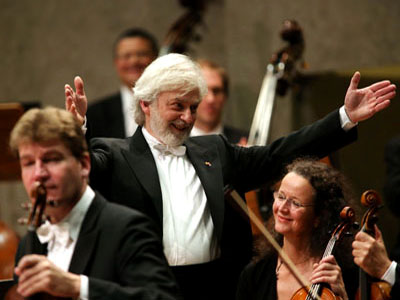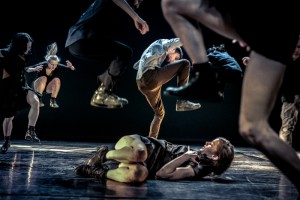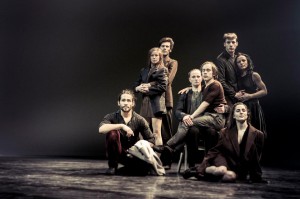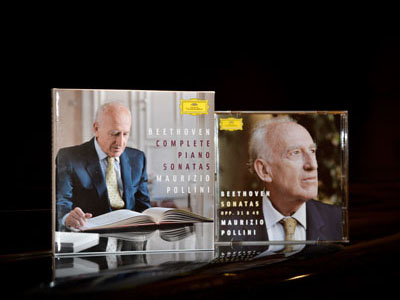By Brian Taylor Goldstein, Esq.
Dear Law and Disorder:
The management company where I work has asked me to sign a non-compete agreement saying that, if I ever quit or am fired, I would be prohibited from working as a manager or agent anywhere in the world for one year after I leave. The owner also contends that the names and addresses of all venues belong to him and that I cannot contact any presenters or venue where I booked an artist for him. Do I have to sign this? Is this reasonable?
You never have to sign anything. Can an employer require an employee to sign a non-compete or be fired? Under certain circumstances, yes. Are the terms you describe reasonable? Hardly. More importantly, even if you signed it, I doubt very much that such an agreement would be enforceable.
In most instances, parties can use a contract to negotiate and agree to just about anything: how and when artists are paid, how commission are calculated, how rights are transferred or licensed, who files and pays for visa petitions, how royalties are calculated, whether the artist gets still or sparkling water in the dressing room, liability, insurance, benefits, salaries—the list is practically endless. However, there are certain instances—albeit rare—when a contractual term will be rendered void or unenforceable. Such instances include:
(1) When a contract either requires a party to do something which would be illegal or refrain from doing something which they have a legal obligation to do.
(2) When a contract term violates an existing law or policy which courts have decided cannot be altered.
Contracts are governed by state laws. In this case, most state laws (particularly the State of New York) will not enforce a non-compete agreement which a judge determines to be “unreasonable” or “over-reaching”—even if the parties agree to it. Reams and reams of case law have determined that prohibiting an ex-employee from working with current clients of the employer is reasonable, but only for a reasonable amount of time—such as a year or two (sometimes longer depending upon the specific circumstances.) However, unless an ex-employee was also the CEO or President of the company, prohibiting an ex-employer from being able to work in the industry in which they earn a living is considered inherently un-reasonable and never enforceable. Simply put, no employer ever has the right to force an ex-employee to move to a different state, change careers, or be rendered unemployable. If the situation were otherwise, too many employers could use the threat of termination to induce or force employees to sign unreasonable non-compete agreements.
As far protecting the confidential or propriety information of an employer, a court will enforce such an agreement provided the information was confidential or proprietary to begin with. Under the Law of Agency, when someone represents someone else, all information belongs to the person they represent. With regard to the arts and entertainment field, any information pertaining to an artist—engagement agreements, the names and contact information of any venues or presenters a manager or agent has contacted on behalf of the artist, the terms of any engagements under negotiation or discussion, etc—all belong to the artist, not the artist’s manager or agent. Moreover, names and addresses are never “proprietary.” The term “proprietary” refers to something unique created or invented by an employer and specific to that employer—such as the colonel’s secret chicken recipe, internal operating procedures or budgets, mark ups, etc. Simply because a manager or agent writes down the name and address of a venue does not make it proprietary. To be sure, an employee, much less an ex-employee, is never permitted to take the physical property or download the files of an employer. However, if something such as names and addresses can be found elsewhere—such as on the internet, in a published list, or is otherwise publically available—then you are free to compile your own list of such information.
As for not being able to book or contact any venues or presenters where you booked artists for a former employer, once again, whether or not this would be enforceable would depend on the “reasonability” of the restriction. If were are talking about a prohibition against contacting particular venues in a particular region for a reasonable period of time, that would probably be enforceable. However, if enforcement of such a restriction would prohibit you from being able to book any artists at any venues in the United States or world-wide that would never be enforceable.
It’s frustrating enough when an artist leaves a roster—its even more so when a trusted employee quits and takes an artist with them. In a highly competitive and risky business, its understandable that artist managements and agencies are looking for ways to protect their interests and livelihoods. However, draconian contracts, strong arm tactics, and paranoia, though frequently embraced, are never appropriate or productive solutions.
Just because an agreement may be unenforceable does not mean you should sign it anyway. An angry and emotional ex-employer may still try to enforce it, requiring you to spend legal fees and court costs getting a judge to throw it out of court. You never want to enter into any agreement knowing at the outset that it will lead to a lawsuit—even if it’s a lawsuit you believe you will win. Certainly, if you are ever asked to sign such an agreement as a condition of employment, run away. However, if your current employer is insisting that you either sign or face unemployment, and a calm discussion offering reasonable restrictions and alternatives falls on deaf ears, you may have no choice but to run the red light and tear up the ticket later.
__________________________________________________________________
For additional information and resources on this and other legal and business issues for the performing arts, visit ggartslaw.com
legal and business issues for the performing arts, visit ggartslaw.com
To ask your own question, write to lawanddisorder@musicalamerica.org.
All questions on any topic related to legal and business issues will be welcome. However, please post only general questions or hypotheticals. GG Arts Law reserves the right to alter, edit or, amend questions to focus on specific issues or to avoid names, circumstances, or any information that could be used to identify or embarrass a specific individual or organization. All questions will be posted anonymously and/or posthumously.
__________________________________________________________________
THE OFFICIAL DISCLAIMER:
THIS IS NOT LEGAL ADVICE!
The purpose of this blog is to provide general advice and guidance, not legal advice. Please consult with an attorney familiar with your specific circumstances, facts, challenges, medications, psychiatric disorders, past-lives, karmic debt, and anything else that may impact your situation before drawing any conclusions, deciding upon a course of action, sending a nasty email, filing a lawsuit, or doing anything rash!









